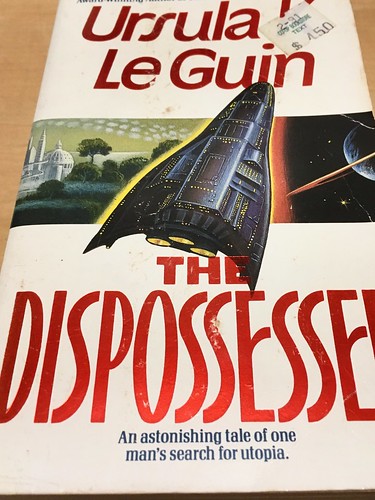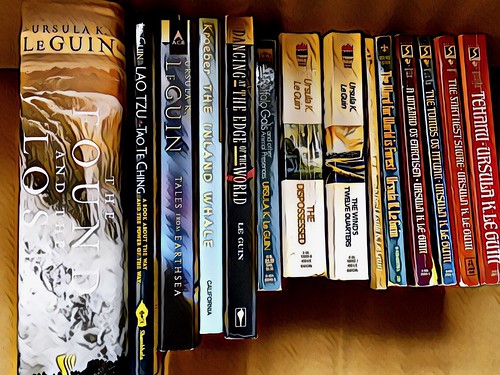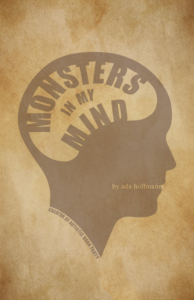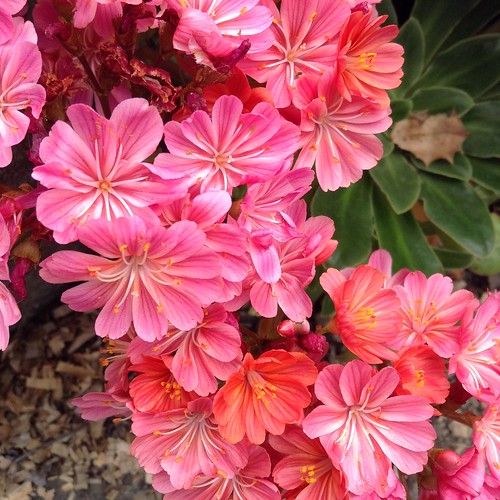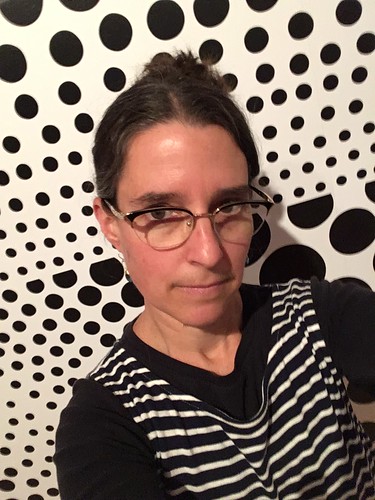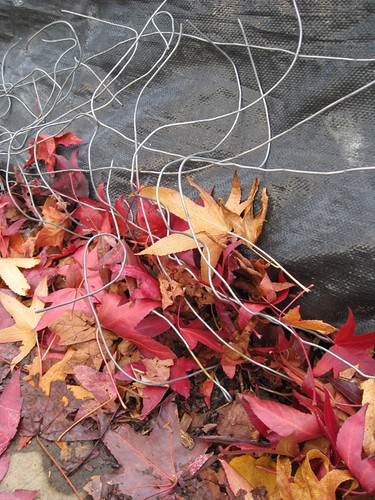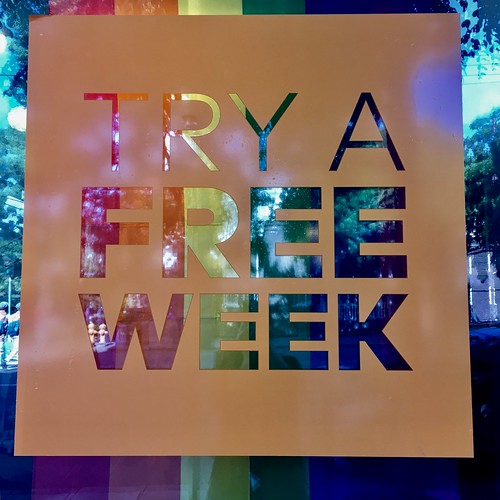Ezra Klein invited NK Jemisin on his podcast and she walked him through the world building exercise she does with students. I have transcribed the portion of the podcast where they go through the exercise. There was some banter at the beginning I did not include, nor did I include the last 20 minutes or so, where they went on to talk about other things a writer might think about when creating their world – like roles and scripts and how those play out in interactions. I encourage you to listen to the entire episode, which you can find here: Ezra Klein Show:
I build a world with fantasy master N.K. Jemisin
EK = Ezra Klein
NKJ = NK Jemisin
[Several minutes of chatter before they start into the world building exercise]

beginning of transcript
EK: How do you imagine a world so fully? What does it take to generate the rules of a universe that your characters and readers will live in for thousands of pages, and make all of that feel real? This is an unusual podcast: it’s not a conversation, it’s a demonstration. Nora shows us how she builds worlds, rather than just telling us. She does it live, here. And it’s amazing to experience in real time! You realize that building new worlds is about thinking more clearly about our world, so you can imagine what would happen if you began changing parts of it.
…
There’s a post-script. Between when I recorded this a few weeks ago and now, Jemisin became the first writer to win three Hugo awards for best novel in a row. And to have every book in a single series win that award. It’s an amazing achievement and I’m so proud to present this conversation.
EK: Nora Jemisin, welcome to the podcast.
NKJ: Thank you for welcoming me.
EK: We are going to do something today that I’m incredibly excited about, because I have never done it before. We’re going to build a world. What is world building, in the science fiction/fantasy sense, because it seems to have a specific meaning that those who aren’t familiar with it may just not know.
NKJ: It does. It’s one of the things that makes SFF unique among literary forms, just because you’re not doing a story in the first world, which is what we call our world/this world. We’re often using secondary worlds, i.e. worlds that aren’t earth. Could be another planet, another reality, could be another universe! It’s somewhere where the laws of physics don’t work the same way. there may be magic, there might be creatures or beings that don’t exist in our world. Could be strange environmental circumstances, but who knows. It’s a staple of science fiction and fantasy writing.
EK: what’s the difference between world building and writing a story in a different world?
NKJ: I mean .. it’s not! There is no difference. World building is the process that you use that you then write the story in. World building is not a substitute for writing a story. There are some examples of books that have been published that are nothing but world, like Tolkien’s The Silmarillion – I’m mangling the name, I always do. So that’s basically a book of almost nothing but world building, because it’s the history of The Lord of the Rings. But for the most part, people aren’t able to publish their books of world building. World building is just an exercise that you do to prepare for writing. And then you don’t, in order to make sure you are writing well, you don’t drown your audience in all of the world building that you do. You use it to provide flavor and environment and effect – in some cases it provides allegories for the problems the people are dealing with that are very much like our own problems, but just at one remove.
EK: so when I’m reading SFF books, there is much more world built than I see.
NKJ: yep. We usually kind of suggest. There’s not a convention on how to do it. There’s a running adage in the science fiction and fantasy writing community of – make sure that you aren’t inflicting “I’ve suffered for my art and now so will you” on your audience (laughter). So I usually tell people treat it like an iceberg: you’ve got 90% of it that you aren’t going to see, and 10% that’s above the water.
EK: So you do these world building workshops, because you are a master of the craft.
NKJ: Thank you.
EK: You have so generously offered to do this live. We’re gonna build —
NKJ: We’ll see how this works out. Ok.
EK: So, where do we start? How do we build a world?
NKJ: well, you can start with the laws of physics. You can start with the universal level. I usually depict this as a kind of inverted pyramid, where we’re starting with the macro scale and working down to the micro. You can start as high as the level as how your universe is built, but then that requires you to understand things like how physics works. I don’t necessarily want to get too deep into that. I usually start with the planetary —
EK: given how I did in physics, I appreciate that.
(laughter)
NKJ: Yeah, I never took physics so all right! I usually start at the planetary level, and for the sake of doing the workshop, when I usually present it to writing students at writing workshops or MFA programs, the way that I usually do it – we start with the assumption of a world that is like Earth. A rocky planet, terrestrial world, not a gas giant, for example. You can do a gas giant, it’s just that you need to know something about gas giants before you’re going to go too far into that. We are usually going to assume we are going to be working with people who are like us. You can run with completely different species if you want. I ended up doing a workshop where we had a whole bunch of people that were sentient cats (laughter). We decided the calicos ruled the world and there was a bunch of stuff about catnip drug trade. Anyway … you start at the planetary level, and we’re gonna assume an earth-like planet. Let’s start by letting you, since you’re going to be my only guinea pig for this particular experiment, letting you pick how many continents you’re gonna work with.
EK: Well I’ve always missed Pangea.
NKJ: Oh, so you want to go with one.
EK: I’m going to stay straight forward. I just took a trans-Atlantic flight and I found that to be too long. (laughter)
NKJ: You’d still have to travel the same distance, it would just be over land!
EK: But that wouldn’t be true, would it?
NKJ: You’re still dealing with the same amount of landmass, it’s just that you aren’t dealing with it spread out, so I mean—
EK: Yes, my flight would have been shorter
NKJ: Maybe.
EK: I’m very bad with questions of geography, so I might just be getting this wrong. But wait, I want to ask one meta question on the way, before we jump in. One of the things I’m hearing from you is that the purpose of the world building project – you need enough knowledge of the world to make the world feel realistic.
NKJ: Yes
EK: So the further you get – if you’re trying to work off a gas giant, what you need is to understand gas giants so well that when you are writing about them you can explain them clearly and it will feel natural, authentic to the reader. That’s the trick of it, I would imagine.
NKJ: yeah. We understand the world we live in innately, because we live in it. But what that means is that every one of us is an expert in surviving on a terrestrial world with a nitrogen-based atmosphere (laughter) and a carbon-based organic system. So we all understand this because we live it. We aren’t standing around having conversations with each other about “Hey, the nitrogen’s pretty good today.” We do understand it. So the characters who are going to inhabit this world also need to understand it, which means that we do. So we’ve got to speak and think as the characters do. We’re not going to be able to get that level of understanding, but we need to think like the locals do and speak like the locals do, in order to make it feel real.
[Ad]
EK: Alright, so Pangea.
NKJ: So we’re going to go with Pangea. And one of the things I think people didn’t understand about the various Pangeas in our world, because there have been more than one –
EK: well see, I’m learning things already!
NKJ: yeah we’ve had multiple supercontinents over time, plate tectonics never really stops. So one of the things people didn’t understand in our world is that it’s gigantic. When the Pangea exists, the interior tends to be fairly arid, because prevailing winds carrying water often can’t reach over into the middle of the continent. I’m just going to preface that. But then – pick a spot somewhere in there where our culture that we’re going to be dealing with – our people and their culture are going to develop.
EK: so when you say pick a spot, what does that mean?
NKJ: middle, coast, by a river. Give me an idea of where you want to put this.
EK: certainly not on the coast
NKJ: not on coast? Ok.
EK: Far enough that resourcing and water and so on are not impossible but are not naturally advantageous. I don’t want to be too deep in the interior, from what you said about the aridness there, you just might not want to be in the interior.
NKJ: Well, think about Australia.
EK: Yeah, I would not want to be in Australia (laughter)
NKJ: Yeah the Outback (laughter)
EK: Sorry to my Australian listeners!
NKJ: I’ve always wanted to visit. I’m not sure I necessarily want to live there. You have to understand that your audience is bringing to the table its knowledge of one world – this world. And they are going to relate pretty much everything they know about this world to whatever world you’re creating. So if you’re going to create a big continent with an interior that’s not well watered with rivers and things like that, and probably wouldn’t be because that far inland, like I said, there’s no way for the water to get there, you’re going to end up with a giant Outback in the middle of this continent.
EK: So if we were thinking about this Pangea like the US, let’s say Nevada is where we’re going … Not the coast of California —
NKJ: Well the coast of California is pretty arid, depending on where you are.
EK: Fair enough
NKJ: Baja California, all of that
EK: that’s true
NKJ: It’s really a question of where it’s located, close to the equator or far away. So is it in a temperate zone or intense sunlight zone? Give me an idea of where – this is the difficulty of not doing this in person – give me an idea of where near the equator your spot is.
EK: We’ve so quickly gotten into places where I’m going to betray how poor my understanding of how the earth works is. Let’s say we’re working with a desert. I have a familiarity with the Nevada desert, for various reasons related to my own life. So let’s say a desert, pretty arid region.
NKJ: okay why don’t we go with the edge of the giant outback-like area.
EK: great
NKJ: So still temperate, still maybe a little bit of rain, but it’s just occasional and sparse, a light spritz. I’m not familiar with Nevada and desert-like regions. You’re going to have to supply that information. I would have to do research to completely create this world. Imagine that climate then. Once we’ve picked a spot – once we understand what the climate is like – why don’t you describe that to me, since I don’t fully understand Nevada? I’ve never lived there.
EK: The world is about to learn that I have gone to Burning Man a couple of times —
NKJ: (laughter)
EK: — and we’re talking in early August, so it’s on my mind. So we’re about to get a description of Black Rock Desert, which would be a very bad place to set up a society in general, that’s the whole point. But it’s one of the only places where I’ve seen an unusual world built. Which is why it came to mind – out of nothing, a world emerges. So [it’s] dusty; a very fine, alkaline dust. The ground is cracked; the more you walk on it, the softer the ground gets. Over the course of people inhabiting it, it becomes more and more difficult for people to get around. There are frequent dust storms. I’m a little concerned about building a world here, so we might want to move it, because I don’t think you can grow anything there, or not anything significant.
NKJ: Is it like that only in August, or all year long?
EK: It gets more rain at times, but my understanding is that this particular area is – and again I could be wrong – but it’s not usable in that way. It’s always pretty bare.
NKJ: And when you say alkaline, that also makes me suspect that’s why things don’t grow there. Alright, let’s move maybe a little further south. (laughter) South of our proto-Burning Man zone to a place that’s maybe a little bit more like the Sonoran desert.
EK: Perfect.
NKJ: Which I did visit once. There’s not much rain, it’s pretty arid, but there’s a lot of arid-adapted plants there. Even some of it is typical stuff like tumbleweeds and so forth but … lots of beautiful rock formations. There was at one point in the past an inland sea there, so there are a lot of fossils in the area. You can find evidence of old forests that no longer exist. This Pangea was not always a Pangea. It came together and at some point when that happened it killed everything that was living in that spot. Let’s assume that our people – and we’re going to go with human beings for the sake of the exercise – but you don’t necessarily have to – like I said, sentient cats.
EK: can we add a prehensile tail?
NKJ: (laughter) sure! Human beings actually do have an adaptation for prehensile tails —
EK: human beings just plus a prehensile tail —
NKJ: yeah sometimes humans are actually born with tails. I don’t know that they’re prehensile, now that I think about it.
EK: I believe they’re not, which has always been a disappointment to me.
NKJ: oh yeah that is kind of sad
EK: I watched a fair amount of Thundercats when I was young —
NKJ: oh my god that’s funny —
EK: I have
NKJ: they don’t have tails though do they?
EK: Am I wrong? At least some of them —
NKJ: No I don’t think—
EK: Am I just mixing up different like Tyrgas and Thunderas?
NKJ: You’re calling me back to my ‘80s childhood and I don’t remember and I’ve just outed myself in front of a whole bunch of nerds as not knowing Thundercats well enough. It’s terrible.
EK: It’s possible I have, actually.
NKJ: Okay
EK: I’m going to call this up on my phone while we’re talking.
NKJ: yeah I don’t think Thundercats have tails.
EK: Oh no, I’m sorry, I’ve totally nailed this. They definitely have tails. I did search “Thundercats tails”
NKJ: oh interesting
EK: so either I’m seeing fan art of them with tails — or they had tails.
NKJ: okay, I’ll go with what you decide. If you want to give them tails, they’ve got tails.
EK: They’ve got tails.
NKJ: so they’re people but with tails —
EK: nah nah I think you’re right —
NKJ: alright —
EK: but people with tails
NKJ: Ok. So we’ve got people with tails. Now that we’ve picked an environment and people with whatever adaptation they have that makes them unique, usually somewhere in this process of world building we insert something I jokingly call “Element X.” “Element X” is usually the point of utter weirdness at which, you know, you’re not in Kansas anymore. Granted, since this world is so different from our own, that IS the Element X. But you just stuck tails on human beings, so I guess that’s also our Element X —
EK: but to talk about this in a meta way, in Black Panther, vibranium is your Element X.
NKJ: yeah, that’s a great way to think about it.
EK: It’s like you twist something and the world begins to evolve in a different way.
NKJ: Yeah, the biggest point of divergence from our world, because in this case pretty much everything is a divergence. Were you going to say something?
EK: No, I was just thinking what possible Element X’s could be. What are some interesting Element Xs in sci-fi? So as we’re doing this, people also get a sense of how this has played out in things they’ve loved before.
NKJ: In Dune, I’m thinking of that classic that a lot of folks have read. First off, it takes place 10,000 years in the future, so that in and of itself is kind of an Element X.
EK: So a setting can be an Element X?
NKJ: Setting can be, time can be, the fact that human beings have effectively evolved a group of people who are capable of transiting space-time, that’s the Spacers’ Guild. Granted that’s with the use of extremely psychedelic drugs but they’re able to do it. There are people who are able to use various mental powers. That’s also an Element X. Psionics is what it’s always been called in sort of classic science fiction.
EK: Got it. So X-Men mutations would be an Element X.
NKJ: Yeah. So psychic abilities, super strength, or just people who have unique abilities. In The Incredibles, the fact that there are Supers is the Element X. That’s an example. As I’ve done this exercise before, I’ve actually — the people that’ve done the workshop have come up with some of the most bizarre Element Xs. Let’s see. In one exercise, we ended up with a sentient Gulf Stream that eats people. So there was an ocean current – like the rest of the ocean was perfectly normal, but that was this one ocean current that was alive and hated you and would eat your ships. So people did not spread over this planet quite as easily as they did on ours, because they kept getting eaten. And they also developed a culture and a mythology around the evil current. So there was that.
Another time I did this exercise I presented it to a bunch of teenagers right before lunch, and the student that I asked to draw the continents drew them in the shape of 12 identical wedges, just like a pizza. (laughter) So … because they were hungry, we ended up with Pizza World —
EK: This is why you don’t write sci-fi before lunch.
NKJ: yeah. Well no! I mean, we ran with it!
EK: Or maybe why you do I guess!
NKJ: yeah yeah what it meant was that the people who evolved on this world, once they developed science, knew that their world could not have naturally developed like this.
EK: One of the things you’re bringing to mind for me – I was a fan when I was younger of the Harry Turtledove alternative fiction series. In the ones where – there’s a great – I haven’t read it in so long I don’t know if it’s great but it was when I read it (laughter) – there’s a series where aliens invade Earth during WWII.
NKJ: Oh interesting.
EK: so the intervention – what’s so interesting about it, thinking about it in your framework is that obliviously, in terms of Earth, the Element X is aliens coming. But for aliens, the way he does it, ginger turns out to be a cocaine-like substance for them.
NKJ: (laughter)
EK: So Earth includes – for this alien race – an addictive drug that begins wreaking havoc and becomes a key plot point.
NKJ: So what happens? Do the Allies start lobbing ginger ale at them or what?
EK: I don’t remember exactly, but it becomes a lot of trading. It becomes ways that dissension under this – as I remember, again, it’s been a very long time – that this very well-oiled invasion machine begins to break down. Where initially human beings have no chance, one of the things that happens – the interactions with Earth and ginger, particularly, becomes a way that the alien force itself changes which in turn creates possibilities for humans to mount – not just a counter-strike, but to create alliances to create mead(?) that the aliens have on them. I remember it being very interesting, but it’s interesting the idea of having an Element X going in both directions.
NKJ: yeah, that is. And that’s one of the things that’s fun about first contact stories. If they’re well rendered, then yeah, you do end up having two Element Xs, or two civilizations reacting to the sudden imposition of Element X.
For the sake of this world exercise, usually we’re dealing with an Element X that’s not a sudden intrusion. Usually we’re dealing with something that’s built into the world and it changes the way people function in their world versus in our world. So past a certain point, it’s no a longer an exercise where we’re building a people but we just start talking about how cultures in our world develop. But one of the things I try and focus on is the cultural elements that form the basis of this culture, and they usually derive from environment or something about this world. For example, when I’m talking about sociological or cultural elements, I’m talking about how does their language develop? What is their religion like? What is it about their sexuality that is unique compared to ours? As part of the exercise, I have the students or people involved in the workshop select 1-3 different elements that we’re going to delve deep in to. Why don’t we go with one, for the sake of this talk? So pick a sociological element you want to dig deep on, and we can kind of figure out how it’s going to shape this culture.
EK: So a thing that I would imagine in a world like this is the coasts will naturally become the seats of power.
NKJ: Possibly.
EK: On the one hand they have more protection. They are only threatened on one side, in the way that others are – it’s sort of a war of all against all.
NKJ: More protection against other cultures?
EK: Protection against other cultures, against invasion; they can escape more easily. They can travel more easily because they can board boats and go up and down. I can imagine ways it wouldn’t have evolved that way, but if I’m picking a way this one did evolve — I imagined power radiates out of coastal capitols.
NKJ: Possibly. Remember that in our world, land and ocean, neither of those are barriers to the spread of a culture. Human beings all over, all cultures, have come up with boats. It’s possible the people living on coasts are so harried by pirates or something, they haven’t been able to develop because they are constantly attacked and their culture gets knocked down again and again and again. That’s happened in certain parts of our world. If you want to run with that, we can do that.
EK: I’m happy to run with a better one!
NKJ: We’re focusing on the folks who live in this desert-like area, so if that’s the one you want to run with, there’s no such thing as a better one in this case. Any cultural element that is different from our own world is going to make an exponential difference in how this world develops versus our own.
EK: So if you were thinking about how to twist something on these desert dwellers, how would you do it?
NKJ: I’m thinking they have tails, but prehensile tails develop in species on our planet that do climbing. You need them for climbing purposes. In a desert there aren’t trees. There are, however, rocks. I wonder if they live in cliffs, just offhand, and maybe they’ve built a culture where they’ve built cities in these giant rock formations. Just off the top of my head.
EK: Would that count as something different enough, because we have cultures like that.
NKJ: Different from the culture that is probably going to be reading the book. We have cliff-dwelling cultures now, who may be reading sci-fi in English coming out of an American publisher (laughter). It’s entirely possible thanks to colonization that all of these books are available and the internet. But for now, but it’s fairly different from the way our world works. I was just thinking of that off the top of my head. They are probably a poor culture compared to the coasts, if you want to run with the idea that the coasts are wealthy, and are more powerful and big cities. The people who live in the desert, are poorer, they are sparse, there are fewer of them, but they have incredibly beautiful cities occupying the giant rock formations.
EK: I love it! Let’s go with that.
NKJ: Okay, let’s run with it. Once we’re into how the culture starts to develop, then we start to talk about the ways that culture is sociologically different from our own. We start talking about syncretism, differentiation, cosmogony and economy. How did that culture get to be the way that it is?
EK: Do you want to define a few of those terms?
NKJ: Sure. Syncretism is basically cultures building on what has come before. So the fact that this culture has tails, means probably somewhere in their distant ancestral past, they were used to living in a world with trees, or a world with things that tails were useful to climb. Maybe their culture, even though they’re now living in cliffs, still venerates trees. Maybe it’s built around the idea of what life in the forest is like. They’ve adapted [to the cliffs], but their culture is still going to have elements that are deprecated from the time they lived in forest. Maybe they venerate walking quietly, even though in the desert it kind of doesn’t matter, but in a forest it would. So they’re just incredibly quiet people. Maybe we found our name for them. They are The Quiet People. I don’t know.
Differentiation is one of the ways cultures develop, kind of in rivalry or interactions with other cultures; they want to be different from those people over there next door. This is why, in a lot of cases, cultures that develop in the same environment next door to each other are so drastically different. They get their identity from “we ain’t like those people.” In some cases, that does lead to warfare, among very similar people. There’s a bunch of different examples I could throw out where.
Cosmogony: where do we come from? How their ideas about where we come from may have developed. Different cultures in our world looked up at the sky and were able to cobble together how the planets worked and figure out basic astronomy. A lot of them used that to develop different mythologies. Greeks came up with the gods living in constellations. Or constellations telling stories that were rooted in their own mythology.
Economy is exactly what it is in our world: how do they get and distribute resources? We might want to dig deeper into that one. People in a desert who were formerly forest dwellers, who are living in a world where they are the poorer cousins of big city folks – how do they make their money? How do they survive?
EK: I think the question is, do we want to make them traders or raiders?
NKJ: my guess is they wouldn’t last long as raiders. If city people have more resources, they can rapidly develop defenses or abilities against any raiders. Eventually they can fight them off and eventually track them into the desert and wipe them out.
EK: so traders it is!
NKJ: Yeah, raiding doesn’t work too well once you’ve got an economic disparity between the groups. One group usually just takes over the other at that point. Let’s say traders. What are they getting out of the desert that people in the city would pay top dollar for? Do you have any thoughts on that?
EK: Let me think about this for a minute.
NKJ: Or at least pay enough that the people living in the desert could survive and make a living?
(Silence then laughter)
EK: Well this is where the problem that I just pulled this out of … holes in my mind immediately comes up —
NKJ: Well, let’s go back to Burning Man though.
EK: You have a crew of people living in unusually high dwellings, who have adapted to a super rough environment. Let’s say, compared to other cultures, have an unusually communal culture. Compared to more individualistic cultures that have developed, cultures that are a little more internally-trading based if we’re going to use the Burning Man build here. They do less trading with themselves, trying to build things communally, in order to survive in extreme conditions, has an almost kibbutz-like way of erecting society, raising children, communicating with one another. Let’s say they are builders. I don’t know where they get the resources to build, but what they are trading is their expertise at creating dwellings that are unusually well designed, to be transported and to withstand harsh climates.
NKJ: That makes me think building into cliffs does require some really complex and advanced architecture. For one of my books, I ended up going to – I’m mutilating the name – Canyon de Chelly. [explanation of how to spell and pronounce]. It’s a little a valley/canyon in Arizona in the Najavo nation. If you go down into it, you can see where the ancient Anasazi had built cliffs a thousand feet off the ground. Whole villages were built up there. You saw the architectural techniques they were using to do this, supports and struts and tackles and pulleys, used at a time when we didn’t think civilizations were doing a lot of this advanced architecture and construction-type stuff. So that makes sense. It follows that the people who come from this culture know some unique building design techniques, and would farm that out to people in the cities who were like, “hey! We don’t know what we’re doing! We’re still living on huts in stilts because of floods. Maybe you can offer us some different suggestions, or maybe you can help us build skyscrapers.
EK: That would be one. The other thing you made me think of, I’ve been doing some other work on a journalism project … about global water crises. Which is that a desert culture would be adapted to less water. If you imagine, as has happened in some of your books that I love, that you’re going through a time of geographic stress, of climatological stress, and so you’re going through a drought. You’re dealing with a poor culture, that has traditionally been poor and a little water deprived, and has managed to survive amidst that. Now the rest of the world is having to deal with similar things. So some of the techniques they’ve developed are all of sudden in demand.
NKJ: Like water reclamation
EK: Water reclamation, yep
NKJ: That works.
EK: So there is knowledge they have. They’re at a moment, perhaps, past poverty, and ways of life that were previously looked down on have some value.
NKJ: That requires us to do some world building about the people on the coasts. Are they the kind of culture who would be willing to listen, to people that they once scorned. We have seen from human history that that does not happen.
EK: That’s a fair point.
NKJ: I’m reminded off the top of my head – there was a period of time where Vikings and Inuit cohabited the same environment. I want to say Greenland, it might be Iceland, I always get them mixed up. It’s horrible. Where they were cohabiting, on the same land, the Inuit had learned to hunt and eat seal, because that was one way to keep their nutrient level high. You couldn’t grow much in that environment. The Vikings would not eat seal. According to them, the seal tasted bad. I don’t blame for being like, ew, gross! Because they wouldn’t adapt, the Vikings did not last very long in this environment. The Inuits did; they’re still there now. Of course, in modern times, everybody’s there.
This is an example in our own world. You see people who could listen to the locals/indigenous people on how to live and survive in their land, and don’t. We haven’t seen a whole lot of that evidence in our society, in our world.
[commercial break]
EK: One thing you do here, and it makes sense having read your work, is that I’ll often suggest something straightforward: maybe the coasts have a lot of power, or these people don’t have much water – and it has often seemed to me in your work that there is a darker view of human nature and the way human societies interact. Seems the work often deals with the question of do the societies become so injust they can’t be redeemed. One question that raises – which is probably a more realistic way of thinking about how societies evolve, is, it often seems when you are thinking about how a society would design or run itself, that things would run straightforwardly as if it was being designed by an engineer. But the question of how worlds actually build themselves is cultural and based around .. differentiation. The organizing principle is around how the cultures thought about themselves, and that creates a different set of downstream adaptations or lack of adaptations, to your point about the Vikings.
NKJ: the thing you have to do, in order to world build well, is understand how our world works. I don’t think it’s a dark view of human nature. I think it’s a view of human nature that’s informed by history. The sad and honest truth is that our history is full of people being awful to each other; also, our history is full of people being great to each other. So I try to depict both. But when you’re talking societies and how they develop, you have to understand they aren’t logical. (laughter)
EK: But that seems like such a big point!
NKJ: Yes! You have to understand that the dynamics that dictate how we do things are not as simple as “hey those people over there have a great idea, why don’t we borrow it or talk to them and get their expertise.” You’re dealing with power dynamics. You’re dealing with egos. You’re doing dealing with psychology and sociology and all the aspects of human nature. It’s important to understand the sciences when you’re doing world building. Both the physical sciences of how our world work and the social sciences of how people work. The world that your readers know best is OUR WORLD, so you’ve got fantastic research available to you, if you want to explore it, on how people have done in our world these exact same things. There’s no reason to make assumptions or pull things out of whole cloth. We’ve got the whole of human history to draw from for examples of how people react when they see another culture doing something that might be a good idea. And frequently they dig in their heels and decide we’re not going to do it because it’s coming from those people over there and they don’t know anything and they’re stupid and that kind of thing.
EK: the other possibility that seems more evident is that, what I said was their status would raise and their prospects would raise, by having something other people wanted. Probably more realistically, their threat would raise, by having something people wanted. And they would be in more danger.
NKJ: Yeah … and they would be in more danger. I briefly thought of that, but then I wanted to keep it brief. So one of the elements I usually cover, once we get into the culture, we are getting micro world building – i.e. the way that the people or culture develops in which the story takes place. One of the things you have to figure out is what the power dynamics are going to be like. So … when we’re talking about power in the sociological sense, we’re talking about the ability to control other people. That’s what that means. Sometimes in subtle ways. The power to coerce or force other people to do things, but with impunity on your part. You can hurt those people and you won’t get punished by your government for doing so. You start to think about – in our world, who is the default? Who is considered normal? Who is treated as marginalized or abnormal?
We also spend time in the workshop talking about who has power over time – like talk time. There have been a number of studies that have come to light in the past few years. We have this common wisdom in our society that women talk too much. Women will talk your ear off. But when actual studies of who dominates conversations have been reviewed, it’s clear that men are the ones who are doing 2/3 of the talking. And that women are perceived as talking too much when they’re actually only talking 25-30% of the time. And that’s just our particular cultural dynamics. We are a patriarchal society. We react badly – men and women – all genders – when women talk versus when men talk. It changes our perception of reality. We literally don’t realize that people who are speaking less than 50% of the time aren’t dominating the conversation.
We have to be aware of how power works in our society and depict these power dynamics – or how power dynamics work in our created society as well.
EK: I really like the way you put all that. One thing I think about in your books – you portray societies where people who have power are subjugated.
NKJ: Well what do you mean power?
EK: People who have the ability to summon physical force – orogonies – people who can cause massive geological fluctuations or in The Inheritance Trilogy, gods, who are in different ways held captive. So, you’re right, they don’t have power, power is the one thing they don’t have, even though they have a potentiality within them. In a less subtle rendering of the world, you would say these are people or creatures on top.
NKJ: remember we are talking about sociological power versus …force? So sociological power can level or imbalance the ground between groups that have physical power. This is not a thing that is unusual or surprising. We’ve got the whole of human history to look at. We’ve got societies that have been dominated by a minority before.
EK: And still do.
NKJ: And still do. We’ve seen how this mechanism works in our own world, where you’ve got a vast population of people who if they just threw themselves at their oppressors enough, they would be free. But the sociological mechanisms can level that ground, can make up for the sheer numbers of people. It’s not necessarily a good thing. I’m not saying it’s a good or a bad thing. I think it’s a bad thing in our own world, but it’s how power works. It’s how power defends itself. How we set up a society in which you’ve got self-perpetuating systems of people who are being oppressed, are told again and again they are supposed to be oppressed, it’s a good thing they are being oppressed – they internalize that. And they eventually start to reinforce that same system within themselves. We’ve seen this happen again and again in our own world. And we have to understand how our own world works if we’re going to be rending this in another world.
So yeah, in the Broken Earth trilogy, you’ve got people with the ability to literally move mountains, but there aren’t very many of them. One of the things the other people, the ones who don’t have the ability to move mountains have figured out to do, is to grab these folks when they’re young. Kill them if they’re found when they’re older, but when you find them young, take them to a place where they can be indoctrinated with the idea that their role is to serve. They are living on the sufferance of their betters. That they are inherently harmful, evil, flawed, bad people and that only by the sufferance of their betters should they be allowed to function, because otherwise they are a threat to all that exists.
When you tell people stuff like this, especially from a young age, when you tell them this again and again again, it’s brainwashing. Same technique works with marketing, just less overtly harmful. Human minds are susceptible to manipulation; human societies are susceptible to manipulation on this level. This is one of the things I try to get across.
EK: How would you think about displaying power in this society we’re creating?
NKJ: If the people in the cities are starting to have a water crisis, this is off the top of my head, and they have nothing but contempt for the desert dwellers who know how to survive with water, the people in the cities would become more profligate in their abuse of water. They will form a culture around flouting how much water they’ve got, even if it’s not much, even if it’s dwindling. And they will waste it more, on purpose, just to stick it to those people in the desert. Or to remind themselves they are more powerful, they are better people. They’re awesome, so … we can do this. We can use up this water. Oh well, sucks to be you. We don’t believe we will run out of water. They will probably tell themselves that. Just like in our world – people tell themselves there’s no need to do anything about climate change. You know, God is going to save us from climate change. God sent us scientists, so I don’t know why … that’s a whole other conversation.
EK: There’s another thing you make me think of. I’m Californian. Recently we’ve gone through some terrible droughts. One of the ways I noticed that the – I don’t think managed is the correct word, but “messaged” is the correct word – is that a lot of usages of water that people broadly had to do, and particularly that were spread across society, pushed on – so getting free water at restaurants. Which is certainly more important if you’re low income than high income – but that became something that – I don’t want to say became frowned upon, but it became questioned. How long should your showers be?
But that’s the not the thing … we have massive agricultural use, which is very wasteful. We have lawns, we have golf courses, we have pools, we have fountains. It seems to me, watching the way people talked about it, there was a constant effort to stigmatize uses of water that were very common and not that big of a deal. And there was also a very big effort among businesses, to try to make people pay for water that they were using in small ways. You saw it in hotels, you saw it in restaurants, you saw it when you were washing your hands. Doing things humans need to do. Meanwhile the questions of industrial use, the things that made people rich off water, those were protected and not questioned. So I do wonder in a world like this if you wouldn’t begin to see a backlash or just lash, towards usages of water that were more essential, as people tried to protect the usages of water that were the things that gave them power.
NKJ: My guess is the people in the city would start blaming the desert dwellers for the dwindling water resources. Yeah, that is how our power dynamics tend to work. People with power immediately want to deflect or project their own misuses onto other people, so they can continue to live the way they want, without making changes. Even if they are the people who are at the core of the problem. But they’ve got the power to deflect, and they do. This is a thing that we see over and over again in our world. If you depict it in this fictional world, your audience will understand exactly why it happens, because they are used to it, because they see it. Because they get that that is how societies work.
EK: So perhaps the idea of living in the desert at all, having society in the desert, becomes stigmatized, becomes something people turn ire on.
NKJ: In that case, you are potentially facing the displacement of this group of people—
EK: Right.
NKJ: Possibly forceable displacement of this group of people, even though these people are capable of surviving in the desert just fine. The society’s wrath would focus on that. I think you’re completely right.
EK: So that’s a power dynamic we’re beginning to see in this world?
NKJ: Yeah. I usually with the workshop – now that we’ve figured out the power dynamics, we then start focusing more on – again assuming we are going to be focusing on the desert society, how that society is structured. We focus on their roles within society, like family roles, gender roles, how their socio-economic system works, what their careers are like. We focus on how their power dynamics manifest within the society. So, as you mentioned, they probably have a more collective, communal way of doing things. We’d need to work out how that functions. We’d need to work out, for example, what are their standards of beauty? If they don’t wash with water, let’s say they do dust washing, which is a perfectly valid thing, it’s perfectly clean and healthy, it’s what a lot of desert societies do. Let’s say they do dust washing. So looking like you’ve got wet, supple skin is not a thing in their society. Maybe having leathery, sun damaged skin feels normal for them.
We would have talked already about how they developed what their skin color is. We’ve noticed in our world that people with darker skin tend to be more resistant to UV radiation, therefore they don’t develop wrinkles as easily, that kind of thing. As we call it, “black don’t crack” in our world. Maybe their standard of beauty is built around: how well does your face resist sunlight? (laughter)
We would talk about what lower-status people in the society do. What are their lives like? We would talk about what it looks like to defy your status in your society. We’ve got people in our world who will attempt to defy the social order by doing the very same thing higher status people can get away with but normally lower status people can’t. I was thinking off the top of my head of manspreading! Which is a thing here in NY.
You’ll see – guys will come on the subway – man spreading, for people who don’t know, is usually men will come down on the subway. [They] will sit down with their legs splayed really widely and take up as much space on the seat as possible, which makes it difficult for other people to sit down. We’ve started seeing the phenomenon of woman spreading, and it’s basically a defiance of our patriarchal society. We see women come in, flop down next to a guy, and immediately start having leg war with him. Where he starts to spread, she spreads right back, and so that is a defiance. It’s a minor defiance, but it’s a little example of how people do things.
EK: As Gandhi says, a spread for a spread leaves the whole subway full. Leaves people unable to sit down.
(laughter)
NKJ: Yeah, that’s true, and nobody’s happy then! That never ends well :). On the other hand, you can’t let them get away with it, so you have to do something.
Once you’ve figured out the roles and how the power dynamics work, then you can start getting into the characterization of the person you are going to focus on in the society and what it is they’re dealing with, and then you can come up with a plot and all that.
The world building exercise is NOT writing; it’s what you do before you write. So once you’ve got these basics in place, then you can proceed.
That’s basically how I do it!
[commercial]
[Ezra and Nora have a discussion about world building, frameworks, understanding models and scripts. I recommend going and listening to the discussion. At the end, he asks her to recommend three books.]
EK: what 3 books would you recommend to our listeners?
NKJ: I’m terrible at recommending books.
Martha Wells Murderbot series
Just finished reading Octavia Butler’s Unexpected Stories – 2 stories that were found posthumously.
I can’t think of anything else off the top of my head! Only two of three.





